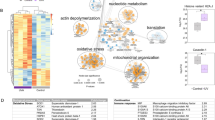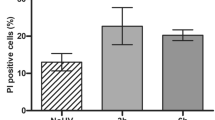Abstract
Solar ultraviolet (UV) light is a major etiological factor in skin carcinogenesis, with solar UV-stimulated signal transduction inducing pathological changes and skin damage. The primary sensor of solar UV-induced cellular signaling has not been identified. We use an experimental system of solar simulated light (SSL) to mimic solar UV and we demonstrate that Fyn is a primary redox sensor involved in SSL-induced signal transduction. Reactive oxygen species (ROS) generated by SSL exposure directly oxidize Cys488 of Fyn, resulting in increased Fyn kinase activity. Fyn oxidation was increased in mouse skin after SSL exposure and Fyn-knockout mice formed larger and more tumors compared with Fyn wild-type mice when exposed to SSL for an extended period of time. Murine embryonic fibroblasts (MEFs) lacking Fyn and cells in which Fyn expression was knocked down were resistant to SSL-induced apoptosis. Furthermore, cells expressing mutant Fyn (C448A) were resistant to SSL-induced apoptosis. These findings suggest that Fyn acts as a regulatory nexus between solar UV, ROS and signal transduction during skin carcinogenesis.
This is a preview of subscription content, access via your institution
Access options
Subscribe to this journal
Receive 50 print issues and online access
$259.00 per year
only $5.18 per issue
Buy this article
- Purchase on Springer Link
- Instant access to full article PDF
Prices may be subject to local taxes which are calculated during checkout






Similar content being viewed by others
References
Siegel R, Naishadham D, Jemal A . Cancer statistics, 2013. CA Cancer J Clin 2013; 63: 11–30.
Abdel-Malek ZA, Kadekaro AL, Swope VB . Stepping up melanocytes to the challenge of UV exposure. Pigment Cell Melanoma Res 2010; 23: 171–186.
Madan V, Lear JT, Szeimies RM . Non-melanoma skin cancer. Lancet 2010; 375: 673–685.
Narayanan DL, Saladi RN, Fox JL . Ultraviolet radiation and skin cancer. Int J Dermatol 2010; 49: 978–986.
Parkin DM, Mesher D, Sasieni P . 13. Cancers attributable to solar (ultraviolet) radiation exposure in the UK in 2010. Br J Cancer 2011; 105: S66–S69.
Parsons SJ, Parsons JT . Src family kinases, key regulators of signal transduction. Oncogene 2004; 23: 7906–7909.
Saito YD, Jensen AR, Salgia R, Posadas EM . Fyn: a novel molecular target in cancer. Cancer 2010; 116: 1629–1637.
Jung SK, Lee KW, Byun S, Kang NJ, Lim SH, Heo YS et al. Myricetin suppresses UVB-induced skin cancer by targeting Fyn. Cancer Res 2008; 68: 6021–6029.
Li W, Marshall C, Mei L, Gelfand J, Seykora JT . Srcasm corrects Fyn-induced epidermal hyperplasia by kinase down-regulation. J Biol Chem 2007; 282: 1161–1169.
Tang X, Feng Y, Ye K . Src-family tyrosine kinase fyn phosphorylates phosphatidylinositol 3-kinase enhancer-activating Akt, preventing its apoptotic cleavage and promoting cell survival. Cell Death Differ 2007; 14: 368–377.
Krutmann J Pathomechanisms of photoaged skin. In: Farage M, Miller K, Maibach H (eds). Textbook of Aging Skin. Springer: Berlin Heidelberg, 2010, pp 101–107.
Wagener FA, Carels CE, Lundvig DM . Targeting the redox balance in inflammatory skin conditions. Int J Mol Sci 2013; 14: 9126–9167.
Hanson KM, Clegg RM . Observation and quantification of ultraviolet-induced reactive oxygen species in ex vivo human skin. Photochem Photobiol 2002; 76: 57–63.
Yoo SK, Starnes TW, Deng Q, Huttenlocher A . Lyn is a redox sensor that mediates leukocyte wound attraction in vivo. Nature 2011; 480: 109–U278.
Giannoni E, Buricchi F, Raugei G, Ramponi G, Chiarugi P . Intracellular reactive oxygen species activate Src tyrosine kinase during cell adhesion and anchorage-dependent cell growth. Mol Cell Biol 2005; 25: 6391–6403.
Li J, Malakhova M, Mottamal M, Reddy K, Kurinov I, Carper A et al. Norathyriol suppresses skin cancers induced by solar ultraviolet radiation by targeting ERK kinases. Cancer Res 2012; 72: 260–270.
Oi N, Chen H, Ok Kim M, Lubet RA, Bode AM, Dong Z . Taxifolin suppresses UV-induced skin carcinogenesis by targeting EGFR and PI3K. Cancer Prev Res (Phila) 2012; 5: 1103–1114.
Fukunaga M, Oka M, Ichihashi M, Yamamoto T, Matsuzaki H, Kikkawa U . UV-induced tyrosine phosphorylation of PKC delta and promotion of apoptosis in the HaCaT cell line. Biochem Biophys Res Commun 2001; 289: 573–579.
Joseloff E, Cataisson C, Aamodt H, Ocheni H, Blumberg P, Kraker AJ et al. Src family kinases phosphorylate protein kinase C delta on tyrosine residues and modify the neoplastic phenotype of skin keratinocytes. J Biol Chem 2002; 277: 12318–12323.
Liu K, Yu D, Cho YY, Bode AM, Ma W, Yao K et al. Sunlight UV-induced skin cancer relies upon activation of the p38alpha signaling pathway. Cancer Res 2013; 73: 2181–2188.
Kulms D, Schwarz T . 20 years after—milestones in molecular photobiology. J Investig Dermatol Symp Proc 2002; 7: 46–50.
Bickers DR, Athar M . Oxidative stress in the pathogenesis of skin disease. J Invest Dermatol 2006; 126: 2565–2575.
Xu Y, Fisher GJ . Ultraviolet (UV) light irradiation induced signal transduction in skin photoaging. J Dermatol Sci Suppl 2005; 1: S1–S8.
Giannoni E, Taddei ML, Chiarugi P . Src redox regulation: again in the front line. Free Radic Biol Med 2010; 49: 516–527.
Aleshin A, Finn RS . SRC: a century of science brought to the clinic. Neoplasia 2010; 12: 599–607.
Zhao L, Li W, Marshall C, Griffin T, Hanson M, Hick R et al. Srcasm inhibits Fyn-induced cutaneous carcinogenesis with modulation of Notch 1 and p53. Cancer Res 2009; 69: 9439–9447.
Byun S, Lee KW, Jung SK, Lee EJ, Hwang MK, Lim SH et al. Luteolin inhibits protein kinase C(epsilon) and c-Src activities and UVB-induced skin cancer. Cancer Res 2010; 70: 2415–2423.
Byun S, Park J, Lee E, Lim S, Yu JG, Lee SJ et al. Src kinase is a direct target of apigenin against UVB-induced skin inflammation. Carcinogenesis 2013; 34: 397–405.
Lee KM, Lee KW, Byun S, Jung SK, Seo SK, Heo YS et al. 5-deoxykaempferol plays a potential therapeutic role by targeting multiple signaling pathways in skin cancer. Cancer Prev Res 2010; 3: 454–465.
Lee KM, Lee KW, Jung SK, Lee EJ, Heo YS, Bode AM et al. Kaempferol inhibits UVB-induced COX-2 expression by suppressing Src kinase activity. Biochem Pharmacol 2010; 80: 2042–2049.
Shim JH, Su ZY, Chae JI, Kim DJ, Zhu F, Ma WY et al. Epigallocatechin gallate suppresses lung cancer cell growth through Ras-GTPase-activating protein SH3 domain-binding protein 1. Cancer Prev Res (Phila) 2010; 3: 670–679.
Sui X, Kong N, Ye L, Han W, Zhou J, Zhang Q et al. p38 and JNK MAPK pathways control the balance of apoptosis and autophagy in response to chemotherapeutic agents. Cancer Lett 2014; 344: 174–179.
Loesch M, Chen G . The p38 MAPK stress pathway as a tumor suppressor or more? Front Biosci 2008; 13: 3581–3593.
Raj D, Brash DE, Grossman D . Keratinocyte apoptosis in epidermal development and disease. J Invest Dermatol 2006; 126: 243–257.
Lippens S, Hoste E, Vandenabeele P, Agostinis P, Declercq W . Cell death in the skin. Apoptosis 2009; 14: 549–569.
Chen ZY, Cai L, Zhu J, Chen M, Chen J, Li ZH et al. Fyn requires HnRNPA2B1 and Sam68 to synergistically regulate apoptosis in pancreatic cancer. Carcinogenesis 2011; 32: 1419–1426.
Vasant C, Rajaram R, Ramasami T . Apoptosis of lymphocytes induced by chromium(VI/V) is through ROS-mediated activation of Src-family kinases and caspase-3. Free Radic Biol Med 2003; 35: 1082–1100.
Basu A, Pal D . Two faces of protein kinase Cdelta: the contrasting roles of PKCdelta in cell survival and cell death. ScientificWorldJournal 2010; 10: 2272–2284.
Benes C, Soltoff SP . Modulation of PKCdelta tyrosine phosphorylation and activity in salivary and PC-12 cells by Src kinases. Am J Physiol J Physiol 2001; 280: C1498–C1510.
Breitkreutz D, Braiman-Wiksman L, Daum N, Denning MF, Tennenbaum T . Protein kinase C family: on the crossroads of cell signaling in skin and tumor epithelium. J Cancer Res Clin Oncol 2007; 133: 793–808.
Humphries MJ, Ohm AM, Schaack J, Adwan TS, Reyland ME . Tyrosine phosphorylation regulates nuclear translocation of PKCdelta. Oncogene 2008; 27: 3045–3053.
Chan CB, Liu X, Jung DY, Jun JY, Luo HR, Kim JK et al. Deficiency of phosphoinositide 3-kinase enhancer protects mice from diet-induced obesity and insulin resistance. Diabetes 2010; 59: 883–893.
Acknowledgements
This work was supported by The Hormel Foundation and National Institutes of Health grants to ZD (CA077646, CA027502, CA166011, CA172457 and R37CA081064), the Basic Science Research Program through the National Research Foundation of Korea (NRF) funded by the Ministry of Education, Science and Technology (F00044) and the Leap Research Program through the National Research Foundation, Ministry of Science, ICT and Future Planning, Republic of Korea (2015R1A2A1A10053567).
Author contributions
AMB, KWL, ZD, SD, DA, GTB, JE, SS and CC designed the experiments. JEK, ER, MHL, CP and YYC performed the research experiments. DHY, DJK, TGL and SKJ analyzed data. JEK and AMB wrote the paper.
Author information
Authors and Affiliations
Corresponding authors
Ethics declarations
Competing interests
The authors declare no conflict of interest.
Additional information
Supplementary Information accompanies this paper on the Oncogene website
Rights and permissions
About this article
Cite this article
Kim, JE., Roh, E., Lee, M. et al. Fyn is a redox sensor involved in solar ultraviolet light-induced signal transduction in skin carcinogenesis. Oncogene 35, 4091–4101 (2016). https://doi.org/10.1038/onc.2015.471
Received:
Revised:
Accepted:
Published:
Issue Date:
DOI: https://doi.org/10.1038/onc.2015.471



